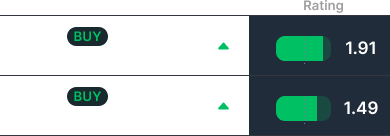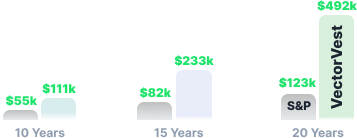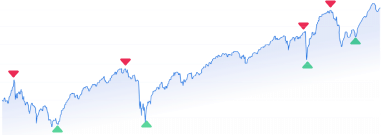For those with a basic understanding of how the stock market works, you may have the idea that you can only make money by picking the winning stocks and investing in companies you believe will continue to prosper in the years to come. This is referred to as taking a “long” position on the stock, meaning that you’re generally optimistic about its future performance. There’s a reason this sounds the most familiar to you–most trades on the stock market are done this way.
However, this isn’t the only strategy you can take to leverage the stock market to grow your money and speculate on the markets. Maybe you’ve heard of people striking it big by shorting stocks before, but you weren’t really sure how shorting a stock works. How does it differ from the ordinary stock market investing that you’re familiar with?
At its core, shorting a stock allows you to benefit from the decreasing price of a company’s shares rather than have your portfolio suffer for it. There are technical intricacies involved in this strategy that make it more complex and inherently more risky than taking a long position on a stock, though we will dig into the nuances of this method more below. Let’s start with a definition.
What Is Stock Shorting?
When shorting a stock, investors believe that the price of a certain company’s shares will go down in the future, and are hoping to profit off of this decline. Whether this is based on suffering performance at the company level or macroeconomic headwinds impacting the entire industry, the bottom line is that investors don’t think taking a long position in the stock would produce growth for their portfolios.
It should be mentioned that shorting stocks is an advanced strategy that shouldn’t be pursued by amateurs or newcomers to the stock market. Plus, it must be done with the right timing and safety in mind to not prove detrimental to your portfolio. Continue reading to see a step-by-step walkthrough of how this process works, specific examples of when you would want to short a stock, how this strategy benefits investors, and risks to consider.
When Would You Consider Shorting A Stock?
In the simplest terms, investors consider taking a short position on a stock when they believe the price of it will decrease in the near term. Maybe the company is about to report its quarterly earnings and they think it will disappoint investors. Or perhaps they anticipate a global event will have a negative impact on its operations. Or, maybe they’ve deemed the stock overvalued in general. Regardless, you should only short a stock when you expect the price to go down after performing diligent research and confirming with technical indicators.
While this may seem straightforward, that isn’t how shorting a stock works for most investors. Timing is everything, and it is not an easy task to predict future price movements without the proper tools. Shorting stocks is not a common strategy utilized by investors given the risk associated with it. Given that the market tends to trend upward over the long run despite near-term volatility or fluctuations, shorting stocks is generally a short-term move that investors can make to realize quick profits. This is similar to how swing trading works – but for a more in-depth look, keep reading down below!
How Shorting A Stock Works: Step By Step
Newcomers may be wondering what is stock shorting and how stock shorting works, and the actual steps are quite different from taking a long position. To short a stock, you must first open a margin account with a broker-dealer, and you must meet certain qualifications in order to do so. Most of the time, investors will need to pay interest on the borrowed amount, which can vary from broker to broker.
Due to regulations, there is a minimum value this account must sit at throughout the duration of the trade, called the maintenance margin. If your account balance falls below this value, what’s referred to as a “margin call” can occur. At this point, your broker can sell your position or require you to deposit additional funds before the trade can continue.
Once you have a margin account opened, you initiate a short position by borrowing shares of the specific company through your broker rather than purchasing them outright and then selling them to a willing buyer. To close this position, you will need to return the borrowed shares to the broker, meaning you will have to purchase them at market value.
For this to be profitable, the investor hopes to purchase the shares at a lower price than what they were able to sell them for and can keep the difference. Otherwise, they will have to purchase the shares at a higher price in order to complete their end of the deal and return the borrowed shares. You can see how important timing is here because waiting too long for the price to move further up or down could prove to be a costly mistake. Don’t worry – we’ll walk you through how to time your positions with ease later on.
The actual intricacies of how shorting a stock works – and finding the shares to be borrowed and sold – is handled by the broker themselves. But, it is important to be aware of the actual steps involved in this process so you can better understand what is stock shorting and where the potential risk and reward come from.
What Is The Benefit Of Stock Shorting?
Investors can use shorting stocks as another tool in their toolbelt to hedge against other investments in their portfolios and to speculate on the decline of certain stocks, among other reasons. So even though there is a high risk associated with this investment strategy, there is also a high reward that investors are looking for. Your specific risk tolerance will dictate if stock shorting is the right approach for you.
Shorting stocks can help investors diversify their portfolios and hedge their risks when done in a calculated manner. Rather than looking to maximize profits from short selling, some investors may enter short positions out of safety to protect gains and limit risks. If they have a long position on a stock and expect some short-term volatility, rather than sell the shares and exit their long position, they may short the stock in the meantime to benefit from the decline in price while holding their long position until the market sees better days.
Are There Risks To Stock Shorting?
Investors face even more risk when shorting stocks than when taking a long position–especially if they don’t understand how shorting a stock works. When investing long, you can only lose up to the initial amount you purchased the security for, but have unlimited upside. Say you buy one share of XYZ company at $50 through a broker. In the adverse situation where their share price drops to $0, the worst that happens is that you lost your initial $50. It sucks, but not the end of the world, right?
On the contrary, shorting a stock subjects investors to unlimited downside risk with limited upside potential. As discussed above, to short a stock, you are borrowing shares from your broker that will need to be returned by the end of the agreement–whether you were able to profitably execute on it or not.
For example, you take a short position on 10 shares of ABC company when it’s trading at $100, assuming that the price will go down in the near term and you’ll be able to profit on the decline. Your broker finds a buyer for these shares and you now have $1,000 in your pocket, but you still need to repurchase the 10 shares at an attractive price to return them to the broker.
For a variety of possible reasons, the share price increases rather than decreases, and you are unable to time a good entry point that would make your short position profitable. So, you purchase the shares at $150 each for a total of $1,500 before the price can rise even more, then return them to the broker. In this instance, you lost $500, so you can see how this could quickly escalate should the share price increase even more during this time.
Additionally, it may be difficult for investors to close the position by finding enough shares to buy in the market, especially if the stock is experiencing particularly high short interest and its trading volume is low. So for those trying to better understand what is stock shorting and the risks involved, the above mentioned points should all be thoroughly considered.
Final Thoughts On How Stock Shorting Works
As you can see, shorting stocks is not a simple transaction and shouldn’t be initiated on a whim. There’s a reason most investors take long positions instead, though the potential gains that can be realized using this strategy cannot be understated, and have provided many investors with quick profits while others saw their portfolios shrink. Understanding value, the level of safety you’re after, and perfecting your timing are all crucial parts of deciding whether to take a short position on a stock and then executing it successfully if choosing to do so.
If you want to set yourself up for success and earn higher returns as a trader, you need to start by investing in yourself. Using reliable and accurate stock forecasting software is the #1 way to keep losses small and infrequent while enjoying greater profitability. This is especially true when shorting stocks, as we can help you time your positions to perfection. We can help you get in and out at the right time to limit risk and maximize profits. Once you’ve tried our software yourself, you’ll never go back to investing the old way!
Not only do our screeners help you identify winning opportunities on autopilot, but you’ll gain insights that help you eliminate guesswork and emotion from investing. At VectorVest, we’ve been calling every major market move for 30 years and counting. If you want to stay ahead of the curve and time your entry and exit with ease, give it a try risk-free. Or, to see how it works firsthand, get a free stock analysis here. If you want to learn about an easier approach to shorting the market, take a look at our article on how to short sell an ETF by purchasing inverse (or contra) ETFs.
What you should do next…
- Get our latest blogs delivered right to your inbox, subscribe to our newsletter.
- The market moves fast! Get our most current evaluation of this stock with our FREE stock analysis tool.
- Looking for stock picks? Not sure if now is the right time to buy/sell? For a limited time, enjoy the full benefits of a 30-day subscription to VectorVest for only [offer_txt] (usually up to [saving_txt]/month) . Get access to our full list of screeners showcasing our top stock picks that tell you exactly what to buy, when to buy, and when to sell.












